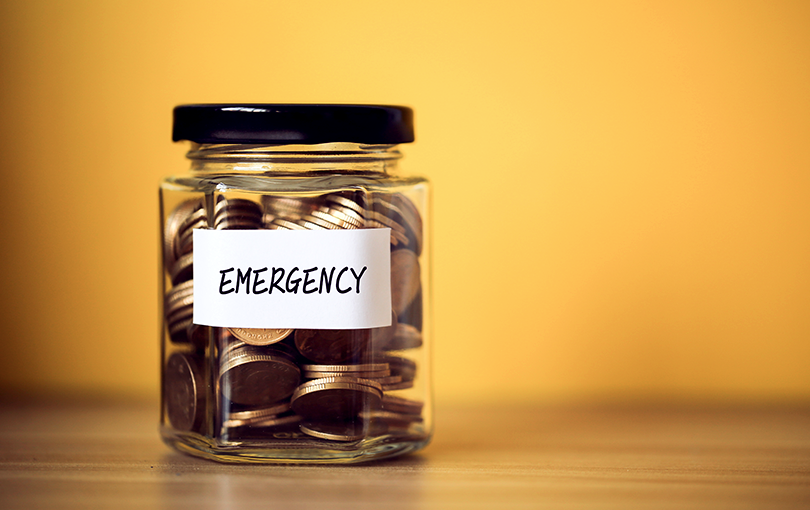Life is all about the unexpected, and where the “unexpected” can hit us the hardest is our wallets.
From unexpected medical bills and dental emergencies to unforeseen visits to the vet and trips to visit ailing family members, life can quickly become overwhelmingly expensive. Having an emergency fund to cover yourself, however, can take the stress out of these already stressful situations.
Sadly, many Americans for example have little to no money saved for unanticipated situations. According to Bankrate, nearly 55 million people—or one-quarter of the population from Millennials to Baby Boomers—had $0 in their emergency fund. Twenty-two percent had less than three months saved, and 18 percent had only three to five months of living expenses piled away in their emergency fund.
What Is an Emergency Fund?
Just as it sounds, an emergency fund is an amount of accessible liquid funds set aside for emergency purposes only.
What constitutes as an emergency to one may look a bit different to another. Here are some examples of a true financial emergency:
- Losing your job
- Your car breaks down or is in an accident
- Unexpected medical expenses
- A sudden issue in maintaining your home, such as a new roof or electrical system
- A close friend or family member passes away and you need to attend the funeral last minute
Here’s what an emergency fund should not be used for:
- A last-minute deal on a vacation
- Elective healthcare (i.e. plastic surgery, aesthetic dental implant, etc.)
- Renovating a home for appearances and not safety
- A new TV
The Size of Your Emergency Fund
Depending on the financial expert you speak to, your emergency fund should be anywhere between three to eight months of your living expenses. After that time, it’s thought that you should be able to resume life as usual and will be earning a steady income once again.
How large the fund is depends on a variety of factors, like how much your monthly expenses are and how much you may be willing to sacrifice to make things work. For example, some people may be willing to cut off their cable, shrink their phone plan, and change their diet to make financial ends meet, while others will still want to maintain their current lifestyle.
How to Feed the Fund
Talking about an emergency fund is nice and all, but there are only so many hours in the day. How are you supposed to start saving?
Here are two ways you can start stashing cash away for your emergency fund:
1. Supplement Your Income
If you’re the “make more money rather than spend less” type, this is a great option. There are a lot of ways you can supplement your income by sharing your talents and using tools already at your disposal.
For example, if you own a car, consider working for Uber or Lyft a couple nights a week. If you’re crafty, open up an online store and sell your wares. Great at graphic design or have knowledge that can be used to help others? Start a side gig “selling” those talents.
2. Spend Less Money
If you’re a natural saver, you may even delight in this process. Comb over your expenses for the last three to six months and start looking at ways you can save on your bills.
- Start cooking at home and eat out less
- Call your cell phone company and find ways where you can save
- Call your cable company and see if they can offer you a package deal (or cancel it all together)
- Go online and compare rates for your health, home, life, and car insurance
If you have debt, start exploring ways to consolidate that debt so that it is more manageable and you can pay it off at a reduced interest rate.
Where to Keep Your Emergency Fund
The biggest question of all is where to keep your emergency fund. Some people may feel comfortable tucking bills away in a jar hidden in the back of their closet, but the temptation to spend that money on a whim may be high.
More importantly, not keeping your emergency funds in a proper account means that you can actually lose money due to inflation.
A low-yield savings account isn’t a great answer either. Typically, these accounts offer less than 1 percent interest, while inflation averages 3 percent every year, so your dollar loses financial power annually.
Creating an investment out of your emergency fund is a good choice for many people. Despite market volatility—which can and will happen—over time you will enjoy larger positive returns.
P2P lending is one of the most rewarding ways to invest. Not only do you benefit from a positive return on your money, but you also support the economy, and the economy financially rewards you in return.
